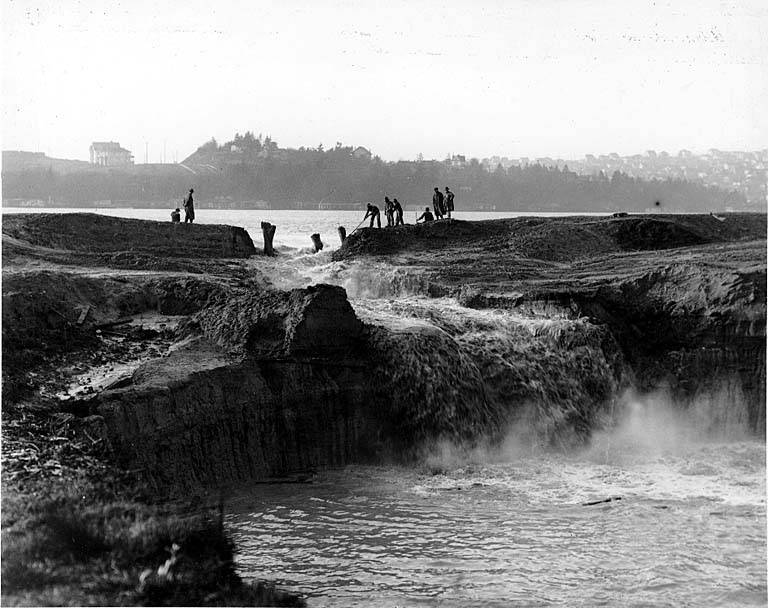
UW's ENVIR 480: Sustainability Studio class in the Program on the Environment presents students with a sustainability topic which they engage in as part of an experiential learning course. The topics change each quarter - this spring, the students researched the UW's environmental history. This is part of a series of posts by the students on some of the information they uncovered.
The history behind the Montlake Cut, which is south of the University of Washington, is quite an interesting story. Prior to the Montlake cut, Lake Washington and Lake Union never met. The Montlake Cut was the result of human influence and engineering in the late 1800’s and early 1900’s.
The idea of making the cut was inspired by the native tribes of the area. A native name for the lake translated to “carry a canoe” and the Duwamish in particular used the lake as a source of food and transport. The Seattleites of the early 1900's used the lake to move around harvested resources, like lumber and fish, and ship them to the growing market in San Francisco, California.
The creation of the Montlake Cut was very much a struggling project up until its completion. Ideas about building a ship canal to connect Lake Washington and Lake Union started as early as 1853, but the idea didn't move forward until 1909. Major C.W. Kutz was in charge of the project and gave C. J. Erikson the responsibility to carry out the project. Interestingly enough, after some legal complications and another setback, Kutz' assistant, Captain Arthur Williams, planted dynamite in the cut and partially blew up the land. This caused controversy but when questioned Williams simply said he had done nothing wrong for he was just doing his job. In 1914, the cut was finished, but did not fully open until 1916.
After the lakes were officially joined, water filled the Montlake Cut. Lake Washington dropped 8.8 feet in height as the water flowed toward the lower Puget Sound. Prior to the cut, many different rivers connected to Lake Washington, but now were disrupted by the change. This caused problems for salmon, who would either get stuck in vary shallow waters or find some regions of the lake completely dried up.
The ecosystem of the Montlake Cut has since recovered, but it is very arguable that the creation of the cut was unsustainable from a modern perspective. The engineering of the cut required that it be large enough for ships to pass. The Montlake Cut caused both social and environmental changes, but was a useful project to many at the time. Although it is not viewed as sustainable now, it helped those of the past engage in a growing market, while also improving their lives.
By Chelsea Bogrow